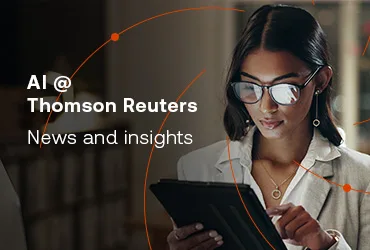From art to agriculture, gaming to social media, AI is surprising us with unexpected and innovative solutions that we may not have been able to imagine.
There’s no end to the doom-and-gloom reports of how AI will affect the future. Consider the hypothetical paperclip scenario where AI is programmed to produce paper clips, and in learning from itself, keeps pushing out the wire loops until global manufacturing capacity and the economy are overrun. But AI does have everyday applications that can entertain, inspire, and motivate.
What are some interesting AI innovations?
Let’s take a look at some fun and interesting AI use case examples.
Buzz off
Bumblebees use “buzz pollination,” a rapid vibrating motion, to pollinate fruits and vegetables such as strawberries, blueberries, tomatoes, potatoes, and sweet peppers. Tiny, AI-powered robots are now joining their insect friends to pollinate these crops in a more efficient and dependable way. An Israel-based company has commercialized these robots to produce the vibrations that shake off pollen from the flowers to fertilize the plants so they can bear fruit.
In other applications, robotic bees, at a tenth of a gram and half the size of a paper clip, are used in search-and-rescue missions, surveillance, and high-res weather and environmental monitoring. Some robot bees can swim underwater, opening up additional possibilities.
The whole tooth and nothing but the tooth
An AI toothbrush? Could there be any more basic (and literally hands-on) human action than brushing your teeth? And yet, as with other AI products, the latest generation of toothbrushes has learned how to make this daily activity better. An AI toothbrush is programmed to take the data of thousands of lab-recorded brushing actions, combine it with your personal brushing style, and come up with recommendations to make your pearly whites even whiter. You’ll be alerted if you’ve missed spots when brushing, if you’re brushing with too much (or too little) pressure, or if you’re not brushing long enough. And, of course, there’s a smartphone app for that.
Picture this
When someone draws a cat, you recognize it by its long tail, its whiskers, its triangle nose, or its pointed ears. Actually, you may recognize it with just one or two of those features. QuickDraw, a browser video game, uses machine learning to gather cues like those to make an educated guess about what a player is drawing. It privately suggests a subject, then asks its artificial intelligence to guess what you’re drawing as you add features. Even if your sketches look more like scratches, your doodled feline is recognized based on the features the game has learned from thousands of other drawings of the same subject. The machine understands that some people will draw the body of the cat, some will draw the head and others will draw only the nose and whiskers in the time allowed. As the game becomes more intelligent (with more users drawing more sketches), it knows that distinct parts of a cat still equal a cat.
Then animate this
Let’s take AI pictures to the next level. In a Harry-Potter-comes-true application, you can now use artificial intelligence to animate still photographs. If you’ve ever wished you’d known family members from a previous generation, you can upload their head-and-shoulders snapshots and then, through the magic of AI, see them gesture and move in a human way. Add a narrative about their life, and the AI platform can create your ancestor as a photo-realistic avatar that can tell you their story in a video. You can even change the language they speak for relatives from the home country.
A little creepy? Maybe. Fascinating? Absolutely.
Who’s a good dog?
Whether it carries implicit bias or not, facial recognition has become a standard use of AI technology. While it’s most often used for human faces, one AI app uses the technology on animals. It can help you recognize a pet’s species, breed, and, wait for it, emotion. It’s easy to see when your dog is happy, but can you tell scared from angry, tired from bored, shame from disgust? The app can. Dog lovers won’t be surprised to learn that Labradors are among the easiest faces to discern, and cat lovers know their pets are more enigmatic than their canine counterparts. As with other AI applications, the program is fed on human intelligence. The app was trained by long-time pet owners who recognized the emotions their animals displayed.
AI for legal professionals
While still considered a breakthrough technology, artificial intelligence has become nearly ubiquitous in everyday life. In the legal world, it has countless applications including process automation, contract analysis, and legal research.
If you have a use case in your head and are wondering, “Could AI help streamline this?” There’s a good chance that it can.
If you’re just getting up to speed with AI, learning resources are available to give you confidence in what’s ahead.








